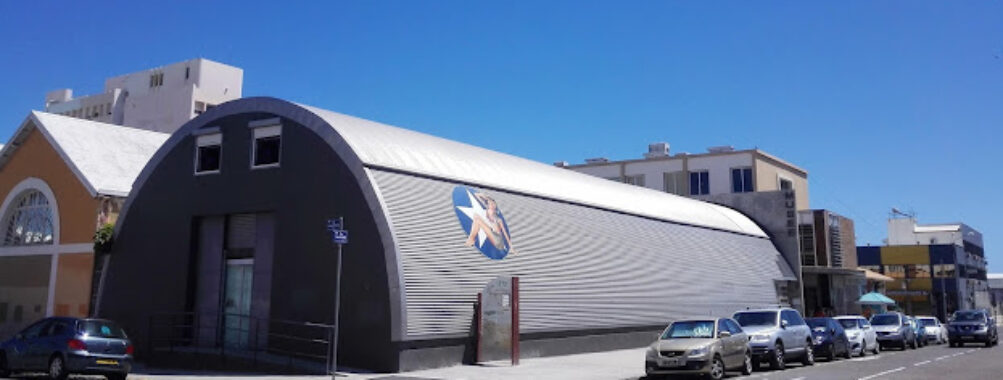
Musée de la Seconde Guerre mondiale
Table of Contents The Musée de la Seconde Guerre mondiale in Nouméa is one of those places that quietly pulls you in before you even realize it. It’s not flashy or overdone—thankfully—but deeply moving in a way that lingers long after you’ve stepped outside. This museum tells the story of New Caledonia’s role during World War II, a perspective that’s often overlooked in mainstream history books. And that’s exactly what makes it so fascinating. You don’t just walk through exhibits here; you walk through time, through the voices and memories of people who lived through a chapter that reshaped the Pacific. What struck me most on my first visit was the atmosphere—calm, respectful, but full of quiet energy. The exhibits are thoughtfully curated, with artifacts that feel personal rather than distant. You’ll find military uniforms, letters written by soldiers, photographs of Nouméa when it was a strategic base for Allied forces, and even everyday items that somehow survived the chaos of war. It’s not a massive museum, but that’s part of its charm. The intimacy allows you to slow down, to really absorb what you’re seeing instead of rushing from one display to another. There’s a sense of balance here, too. The museum doesn’t glorify war; it reflects on it. It honors the courage of those who served and the resilience of civilians who endured the uncertainty of wartime life. And while the subject matter is heavy, the presentation feels accessible—even for kids. It’s one of those rare places where history feels human again, not just a list of dates and names. One of my favorite features is the small corner dedicated to correspondence between soldiers and their families. Reading those letters—some full of hope, others heartbreak—reminds you that history isn’t just about battles; it’s about people. And that’s something this museum captures beautifully. If you’re planning a trip to Nouméa, the best time to visit the museum is during the cooler, drier months—roughly from May to September. The weather’s pleasant, and you can comfortably explore the city before or after your museum visit. That said, the museum itself is indoors and air-conditioned, so it’s a great option year-round, especially if you’re looking for a quiet escape from the midday sun. Weekday mornings tend to be the calmest time to visit. You’ll have more space to wander and take your time reading the displays without feeling rushed. I once went on a rainy afternoon, and honestly, it added to the mood—there’s something about the sound of rain on the roof while you’re reading about wartime Nouméa that feels oddly fitting. During local holidays or school breaks, the museum can get a bit busier with families and student groups. But even then, it never feels overcrowded. The staff are friendly, always ready to answer questions, and genuinely passionate about the history they’re preserving. The museum is located in the heart of Nouméa, making it easy to reach from most parts of the city. If you’re staying downtown, you can easily walk or take a short taxi ride. Public buses also stop nearby, which is convenient if you prefer to travel like a local. For those renting a car, parking is available and accessible, which is always a relief when you’re exploring an unfamiliar city. Personally, I recommend taking the scenic route if you can—driving along the waterfront before heading up to the museum gives you a sense of how the city has evolved since the war. It’s a nice reminder that the same harbor that once saw military ships now welcomes cruise liners and fishing boats. It’s a full-circle moment that ties the past and present together beautifully. Here’s the thing about the Musée de la Seconde Guerre mondiale—it’s not a place you rush through. Give yourself at least an hour, maybe two, to really take it in. The exhibits are detailed, and you’ll want time to read, reflect, and maybe even chat with the staff. Bring a small notebook if you’re the kind of traveler who likes jotting down thoughts or sketching; there’s plenty here that might inspire you. If you’re traveling with kids, don’t worry. The museum is surprisingly engaging for younger visitors. The interactive displays help them grasp the human side of history without overwhelming them. Just be prepared to answer a few tough questions—they might surprise you with how deeply they think about what they see. Accessibility is excellent, which I really appreciate. The entrance, parking, and restrooms are all wheelchair-friendly, and the layout is easy to navigate. There’s also a calm, respectful atmosphere that makes it a good choice if you’re looking for something meaningful but not too intense. One small tip: bring a bottle of water, especially if you’re visiting on a warm day. There isn’t a restaurant on-site, but there are plenty of cafes nearby where you can grab a bite afterward. And if you’re into photography, ask before taking pictures—some exhibits have restrictions, but others are fine to capture. I found that taking a few photos helped me remember the details later, especially when I wanted to share the experience with friends back home. Finally, approach your visit with curiosity. This isn’t just a museum about war—it’s about resilience, adaptation, and the way a small island played a big role in global history. You’ll walk away not just with knowledge, but with perspective. And maybe, like me, you’ll find yourself thinking about those stories long after you’ve left. That’s the mark of a truly special place.Description
Key Features
Best Time to Visit
How to Get There
Tips for Visiting
Location
Places to Stay Near Musée de la Seconde Guerre mondiale
Find and Book a Tour
Explore More Travel Guides
No reviews found! Be the first to review!